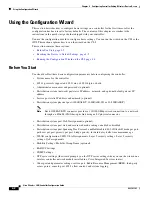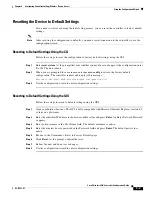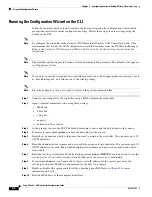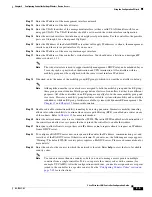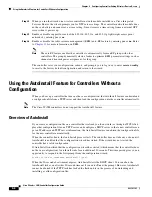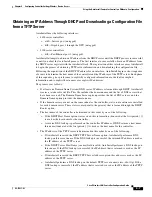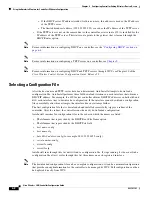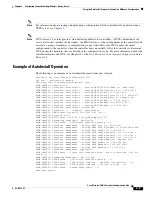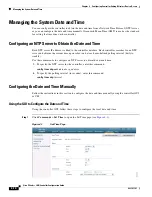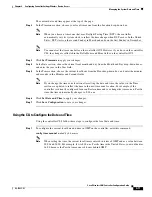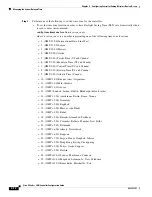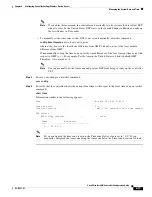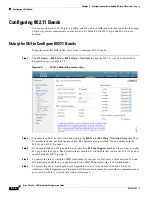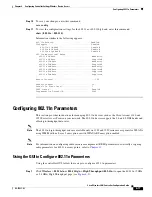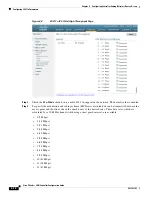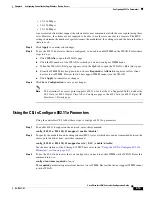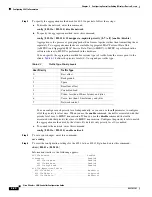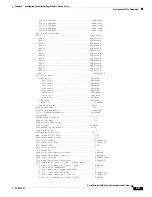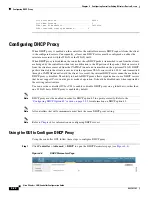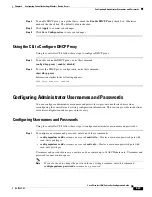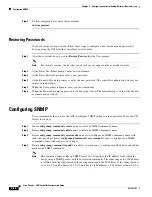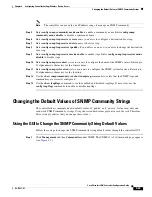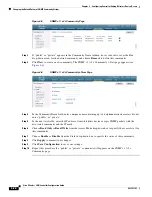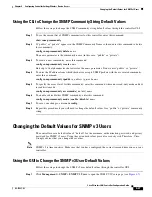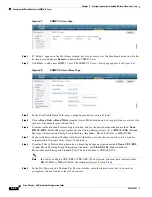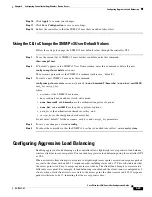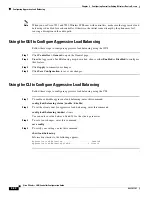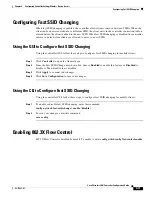
4-16
Cisco Wireless LAN Controller Configuration Guide
OL-17037-01
Chapter 4 Configuring Controller SettingsWireless Device Access
Configuring 802.11 Bands
Step 3
To specify the rate at which the SSID is broadcast by the access point, enter this command:
config
{
802.11a
|
802.11b
}
beaconperiod
time_unit
where
time_unit
is the beacon interval in time units (TU). One TU is 1024 micro seconds. You can
configure the access point to send a beacon every 20 to 1000 milliseconds.
Step 4
To specify the size at which packets are fragmented, enter this command:
config
{
802.11a
|
802.11b
}
fragmentation
threshold
where
threshold
is a value between 256 and 2346 bytes (inclusive). Specify a low number for areas where
communication is poor or where there is a great deal of radio interference.
Step 5
To make access points advertise their channel and transmit power level in beacons and probe responses,
enter this command:
config
{
802.11a
|
802.11b
}
dtpc
{
enable
|
disable
}
The default value is enabled. Client devices using dynamic transmit power control (DTPC) receive the
channel and power level information from the access points and adjust their settings automatically. For
example, a client device used primarily in Japan could rely on DTPC to adjust its channel and power
settings automatically when it travels to Italy and joins a network there.
Note
On access points that run Cisco IOS software, this feature is called
world mode
.
Step 6
To specify the rates at which data can be transmitted between the controller and the client, enter this
command:
config
{
802.11a
|
802.11b
}
rate
{
disabled
|
mandatory
|
supported
}
rate
where
•
disabled
—The clients specify the data rates used for communication.
•
mandatory
—Specifies that clients support this data rate in order to associate to an access point on
the controller.
•
supported
—Any associated clients that support this data rate may communicate with the access
point using that rate. However, the clients are not required to be able to use this rate in order to
associate.
•
rate
—The rate at which data is transmitted:
–
6, 9, 12, 18, 24, 36, 48, and 54 Mbps (802.11a)
–
1, 2, 5.5, 6, 9, 11, 12, 18, 24, 36, 48, or 54 Mbps (802.11b/g)
Step 7
To enable the 802.11a band, enter this command:
config 802.11a enable network
The default value is enabled.
Step 8
To enable the 802.11b band, enter this command:
config 802.11b enable network
The default value is enabled.
Step 9
To enable or disable 802.11g network support, enter this command:
config 802.11b 11gSupport
{
enable
|
disable
}
The default value is enabled. You can use this command only if the 802.11b band is enabled. If you
disable this feature, the 802.11b band is enabled without 802.11g support.

